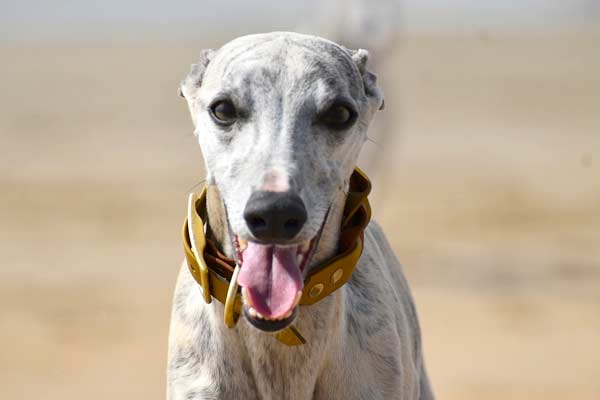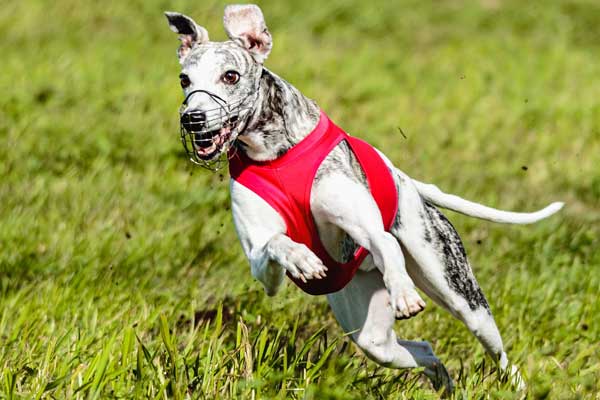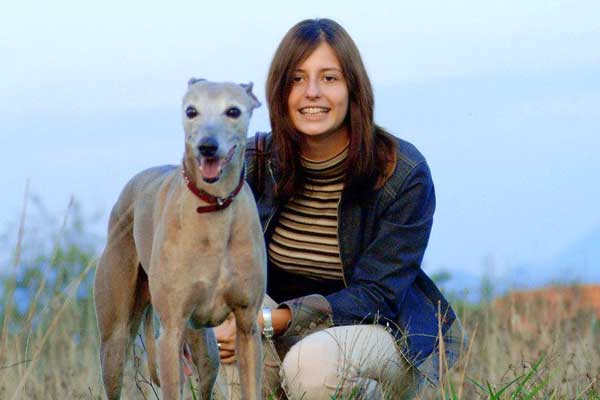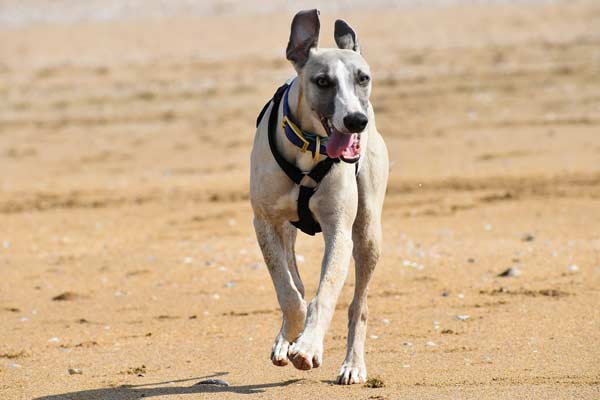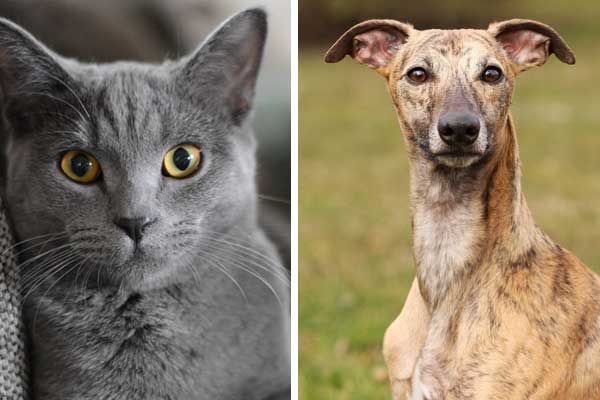When Do Whippets Stop Growing? Redefining Your Dog’s Growth
Are you thinking of getting a whippet? Or you’ve already got one and wondered when they stop growing. Whippets are a beautiful breed, with deep brown eyes and sleek coats. But before you can enjoy your dog’s adult size, it’s essential to understand the factors that influence its growth rate.
In this blog post, we’ll discuss everything you need to know about when do whippets stop growing. We’ll explore what influences their growth rate and provide signs that your pup is done growing.
We’ll cover how to help them reach their full size and whippet common health issues. In this article, you’ll have all the information needed to ensure your furry friend enjoys good health for years to come!
At What Age Are Whippets Fully Grown?
Whippet puppies usually reach their full size by 12-15 months, with average height and weight being 19 to 21 inches and 20 to 40 pounds, respectively. Although they are a slender breed, most whippets weigh around 30 pounds.
When Do Whippets Calm Down?
Generally, whippets tend to calm down around 18 months – 2 years of age which means that they typically mature earlier than many other breeds.
Signs That Your Whippet Is Done Growing
Watching your Whippet grow and develop can be exciting. But how do you know when they’ve reached their full size?
Knowing the signs that your Whippet is fully growing can help ensure that your pup is healthy and happy. So what are the tell-tale signs that your dog has stopped growing? Read on to find out!
1. Body Shape: When a Whippet reaches adulthood, its body shape will become more defined and muscular. You may also notice your pup’s chest becoming broad and its legs beginning to straighten as they reach adult size.
2. Weight: Once fully grown, Whippets typically weigh between 25-40 pounds. If your pup is within this range and doesn’t appear to be gaining weight, it may be fully grown.
3. Height: Adult Whippets usually reach heights between 18-22 inches at the shoulder. Once your pup reaches this height and does not appear to be getting any taller, they are likely fully growing.
In addition to these physical signs, you may also notice behavioral changes as your pup ages. For example, some Whippets will become less active or playful and may start sleeping more than usual once they reach full maturity.
How to Help Your Whippet Reach Its Full Potential
When raising a healthy and happy Whippet, the important thing is ensuring that your pup reaches its full potential.
Here are some tips that will help your Whippet reach its full potential!
1. Provide a Balanced Diet: Feed your high-quality pup food designed for their size and age to ensure they get the proper nutrients to grow and develop properly.
2. Exercise Regularly: Keeping your pup active with daily walks or playtime sessions can help them reach their full potential size.
Exercise helps to promote healthy muscle development and can help prevent obesity.
3. Socialize: Ensure that your pup has plenty of opportunities to socialize with other dogs, humans, and animals from a young age to help them learn proper behavior and build confidence as they grow.
Factors That Influence a Whippet’s Growth Rate
Many factors, including diet, genetics, and environment, influence a Whippet’s growth rate. A healthy diet with plenty of high-quality protein can help a Whippet reach their full potential size.
Genetics also play an essential role in determining the size of a Whippet; some will naturally be larger than others.
Also, the environment can influence their growth rate. For example, puppies raised in crowded or noisy environments may experience slower development than those that have more space to explore and interact with other animals.

Whippets Common Health Issues
Whippets are a popular breed of small to medium-sized dogs known for their loving and loyal nature. While they are generally healthy, some health conditions affect the breed more commonly than others.
These include cardiac disease, deafness, pancreatitis, hypothyroidism, and vestibular disease.
1. Cardiac Disease: Heart disease in Whippets refers to an inability of the heart to pump adequate blood to the body. Symptoms may include shortness of breath, fatigue after exercise, and coughing or fainting spells due to reduced oxygen flow throughout the body.
Treatment typically involves medications such as diuretics, and ACE inhibitors and lifestyle changes like weight management and regular exercise.
2. Deafness: Usually caused by a lack of pigment development within their inner ear canal, making them unable to hear certain sounds or frequencies properly, resulting in hearing loss on one or both sides depending on severity levels.
3. Pancreatitis: An pancreas inflammation usually caused by various factors such as diet, medications, or underlying medical conditions. Symptoms may include vomiting, diarrhea, pain, and decreased appetite.
Treatment typically involves fluids, antibiotics to prevent secondary bacterial infections, pancreatic enzymes, and other medications from reducing inflammation.
4. Hypothyroidism: Caused by an underactive thyroid gland, resulting in lower levels of hormones that help regulate metabolism and organ functions. Symptoms may include weight gain, hair loss, skin discoloration, lethargy, and decreased appetite.
Treatment typically involves daily medication to replace the lack of hormones within the system.
5. Vestibular Disease: Affects the balance and coordination system in dogs, particularly affecting Whippets. Symptoms may include head tilting, loss of balance, and circling behavior.
Treatment typically involves antibiotics to help treat underlying infections and medications to reduce inflammation and improve coordination.
Tips for Maintaining Good Health in Older Dogs
Here are a few simple tips owners can follow to help their senior canine companions stay healthy.
1. Exercise: Regular exercise is essential for older dogs to help keep their muscles and joints strong. Even light activities such as walks or playing fetch can benefit aging dogs.
2. Nutrition: Ensure your pup receives a diet of essential vitamins and minerals appropriate for their age. Consider switching to an older dog food formula.
3. Schedule Regular Vet Visits: It’s essential to take your pup to the vet regularly in their later years to help detect any age-related issues or illnesses early on and ensure they receive necessary treatments.
4. Mental Stimulation: Keeping your aging pup mentally active is just as important as physical exercise. Interactive toys and puzzle games can help keep their mind sharp and prevent cognitive decline.
About Whippet Breed
The Whippet is a medium-sized dog that originated in England. They have a slender, athletic build and are known for their intelligence and loyalty.
They have short, smooth coats in many colors, including white, black, brindle, fawn, red sable, or blue merle. Their heads are long with pointed muzzles and large ears that stand erect on top of them.
Whippets typically live an average lifespan of 12-15 years and make excellent family pets due to their affectionate nature and easygoing personality.
Whippet price varies greatly but can range from $800-$2,000 for a puppy purchased from a reputable breeder.
Conclusion
Whippets are slender dogs, usually growing to an average height of 19-21 inches and weighing 20-40 pounds, with most whippets weighing around 30 pounds.
Whippet puppies typically reach their full size between 12-15 months, though they tend to achieve maturity earlier than many other breeds and can calm down around 18-24 months of age.
